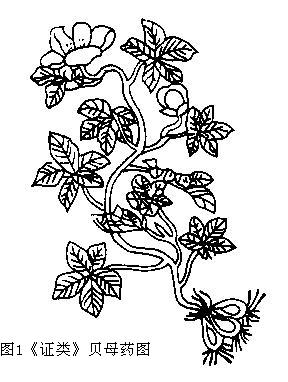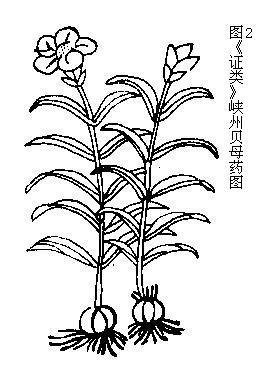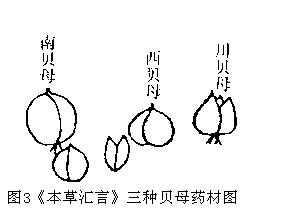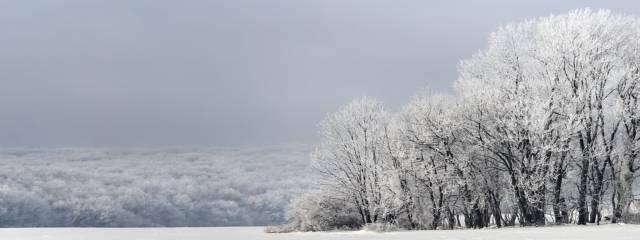| title | Tendrilleaf Fritillary Bulb, Thunberg Fritillary Bulb, Paniculate Bolbostemma |
| release time | 2006/1/22 |
| source | Jade Knock Studio |
| keyword | Tendrilleaf Fritillary Bulb, Thunberg Fritillary Bulb, Paniculate Bolbostemma, Fritillaria Bulb |
The current use of Tendrilleaf Fritillary Bulb refers to the dried bulbs of the Lily Bulb family plants Fritillaria cirrhosa D. Don, Fritillaria unibracteata Hsiao et K. C. Hsia, Fritillaria przewalskii Maxim., or Fritillaria delavayi Franch. The first three are commonly known as "Songbei" and "Qingbei" based on their different characteristics, while the latter is commonly known as "Lubei". Lubei is mainly produced in Sichuan, Qinghai, and Yunnan, with a large output. It is named Lubei because Sichuan products are mostly distributed in Kangding County's Dajianlu. Songbei is mainly produced in Songpan and Barkam in northern Sichuan. Qingbei is mainly produced in Yushu, Qinghai, Deqin in Yunnan, Mudi River and Huankong in Xinjiang, western Sichuan, and Min County in Gansu. The current use of Thunberg Fritillary Bulb refers to the dried bulbs of the Lily Bulb family plant Fritillaria thunbergii Miq., mainly produced in Yin County, Dongyang, Pan'an, and Yuqian in Ningbo, Zhejiang, and Banqiao in Hubei. It is also produced in Anhui and Jiangsu provinces. Thunberg Fritillary Bulb is most famous for being produced in the Xiangshan area of Zhejiang, hence it is also known as Xiangbei. The current use of Paniculate Bolbostemma refers to the dried tubers of the bottle gourd peel family plant Bolbostemma paniculatum (Maxim.) Franquet, mainly distributed in Hebei, Henan, Shandong, Shaanxi, Shanxi, Gansu, and Yunnan.
Materia medica research suggests that the Fritillaria Bulb in Bencao Jing is likely Bolbostemma paniculatum of the bottle gourd peel family. The use of Lily Bulb family plants gradually began after the Wei and Jin dynasties. The "Xiazhou Fritillaria Bulb" depicted in Zheng Lei is almost certainly a plant of the Fritillaria genus in the Lily Bulb family, but it is not the current Tendrilleaf Fritillary Bulb or Thunberg Fritillary Bulb varieties. The medicinal history of the current genuine Sichuan and Thunberg Fritillary Bulb can only be traced back to the Ming Dynasty.
bubble_chart Variety Identification
The poem "Zai Chi" from "Yong Feng" in the Book of Songs states, "Ascend that hill, and gather its Fritillaria Bulb," with Mao's commentary stating, "Fritillaria Bulb is a medicinal herb," and further, "Gathering the Fritillaria Bulb is for treating diseases." The Erya states, "Meng is Fritillaria Bulb." The Shuowen agrees. The Guangya states, "Beifu is a medicinal fruit." Note that "fu" and "mu" can be used interchangeably, such as the "thumb" being called "father finger," thus "Fritillaria Bulb" and "Beifu" refer to the same thing. Fritillaria Bulb is named for its root characteristics, with "bei" describing its small roots clustered like shells. However, there are two ancient descriptions of its above-ground morphological characteristics. Lu Ji's "Mao Shi Cao Mu Niao Shou Chong Yu Shu" states, "Fritillaria Bulb is a medicinal herb today. Its leaves are like those of Trichosanthes but smaller, and its seeds are under the root like taro seeds, white, connected in all directions, with decomposition." According to Lu's description, this plant should be Bolbostemma paniculatum of the bottle gourd peel family. Guo Pu's annotation on the Erya states, "The roots are like small shells, round and white-flowered, with leaves resembling chives." His description is closer to the Lily Bulb family plants.
What exactly is the Fritillaria Bulb mentioned in the Bencao Jing? Since there is no morphological description, we can only make a rough speculation. In terms of efficacy, the Bencao Jing states that Fritillaria Bulb "primarily treats cold-damage disease, vexing heat, dribbling urination, pathogenic qi, hernia-like masses, pharyngitis, difficult lactation, metal wounds, and wind tetany." Its effects are quite similar to those of the bottle gourd peel from the Paniculate Bolbostemma family, which is known for "dissipating nodules, reducing swelling, and removing toxins." Notably, the Bencao Jing does not mention the cough-relieving and phlegm-dispelling effects of the Fritillaria Bulb from the Fritillaria genus that are recognized today. Moreover, a thorough examination of other Han Dynasty medical texts, such as the Fuyang Wanwu Hanjian, which states, "Fritillaria Bulb has been used to treat cold and heat," and the Wuwei Handai Yijian, which uses Fritillaria Bulb in a formula for treating blood stasis, as well as the two formulas in the "Cold-Damage Disease and Miscellaneous Diseases Treatise" that use Fritillaria Bulb—namely, the White Powder formula for treating cold and solid thoracic accumulation and the Angelica, Fritillary, and Sophora Pill for treating difficult urination during pregnancy—all align with the Bencao Jing's description and do not mention its cough-relieving and phlegm-dispelling effects. The Bencao Jing mentions that Fritillaria Bulb "grows in the Jin region," which is not far from the ancient Yong region (modern-day Xinxiang, Henan). Bolbostemma paniculatum is distributed in both Henan and Shanxi. Whether the Fritillaria Bulb in the Bencao Jing is definitely the Paniculate Bolbostemma as described in Lu Ji's poetic commentary is still insufficiently evidenced, but it is undoubtedly not the Fritillaria genus plant used today.Bielu states that Fritillaria Bulb is used for "cough and abnormal rising of qi." Tao Hong-jing said, "Now it is found near the roads, shaped like clustered shells, hence the name Fritillaria Bulb. When fasting, taking it prevents hunger." The "Xin Xiu" mentions, "Its leaves resemble garlic, and it is best harvested in April when the garlic is ripe. If the plant withers in October, the root is also not good." These descriptions gradually approach the Lily Bulb family, but until the Song Dynasty, the source of Fritillaria Bulb was not truly unified.



The "Pin Hui Jing Yao," "Bencao Mengquan," and "Bencao Gangmu" offer no new insights on Fritillaria Bulb. Zhang Jing-yue's "Bencao Zheng" divides Fritillaria Bulb into Fritillaria Bulb and Paniculate Bolbostemma. The exact nature of Paniculate Bolbostemma is uncertain, but it is noted that "its properties and taste are strong, and its efficacy in clearing and descending is several times greater than Tendrilleaf Fritillary Bulb." In "Jingyue Quanshu," Volume 15, "Medicines for Purging Fire," Tendrilleaf Fritillary Bulb is also listed. "Bencao Huiyan" mentions that "the Sichuan variety has a mild taste and superior quality," while "Bencao Chongyuan" states, "Fritillaria Bulb from Sichuan has a sweet and mild taste, while the local variety is bitter and pungent," and "the root resembles the lung, is white in color, and pungent in taste. It grows in Sichuan and is a medicine for moistening and tonifying the lung metal." This indicates that the emphasis on Sichuan-produced Fritillaria Bulb began in the Ming Dynasty.
From the late Ming Dynasty (third stage), while continuing to recognize Tendrilleaf Fritillary Bulb, there was a gradual mention of Zhejiang-produced Fritillaria Bulb. The earliest reference seems to be in "Bencao Huiyan," where Ni Zumo said, "Fritillaria Bulb grows in Sichuan and Jin areas... It is also found in Jinhua and Xiangshan, Zhejiang, but its taste is bitter and unpleasant, only suitable for breaking blood stasis and removing toxins." The book also includes illustrations of Tendrilleaf Fritillary Bulb, Southern Fritillaria Bulb, and Western Fritillaria Bulb (Figure 3). Based on the shape of the medicinal material, the Tendrilleaf Fritillary Bulb depicted is likely of the Songbei or Lubei type. The Southern Fritillaria Bulb, based on its origin, might be Fritillaria thunbergii. As for the Western Fritillaria Bulb, it might be what the Qing Dynasty "Bencao Gangmu Shiyi" referred to as "Xibei from Shaanxi, also known as Dabe." "Weiyao Tiaobian" states, "There is also a counterfeit called Xibei, which cannot moisten dryness and resolve phlegm, and is even antagonistic." This Xibei is likely Huolirion montana (Dammer) Wang et Tang of the Lily Bulb family.
However, the discussion on "Paniculate Bolbostemma" in Bencao Gangmu Shiyi is rather ambiguous. Zhao states: "Paniculate Bolbostemma is also known as Da Bei. According to 'Bai Cao Jing,' the local Bei is large like a coin, with a single petal and no division, distinctly different from those produced in Sichuan. It is produced in various places, including Anshan in Liu'an, Anhui; Zhangzhu in Yixing, Jiangnan; and Sunjiafu in Ningguo Prefecture. In Zhejiang, it is found only in Zhangcun, Yin County, Ningbo, and Xiangshan. For medicinal use, select those that are large, white, dry, and with fine skin." He also mentions: "Fritillaria Bulb has sweet and bitter varieties, with distinctions between Sichuan and Xiangshan types. According to 'Bai Cao Jing,' those produced in Sichuan are called Chuan Bei, those from Xiangshan are called Xiang Bei, and the largest ones are called Tu Bei. Sichuan-produced ones have a sweet taste, occasionally slightly bitter, but not as purely bitter as those from other regions. Medicinally, they can tonify qi and resolve phlegm without being cold, suitable for those with deficiency. Xiang Bei is purely bitter and cold, capable of dissolving hard phlegm, indicating its strong efficacy. Tu Bei, on the other hand, specializes in resolving pus and detoxifying abscesses, with a dry and non-moistening nature. Xiang Bei is generally small, while Tu Bei is uniquely large, differing also from Sichuan-produced ones. Gangmu does not distinguish their functions, possibly because this variety did not exist at that time." Zhao Xuemin's description of Paniculate Bolbostemma likely still refers mainly to plants of the Fritillaria genus. As for the poem by Song Dynasty's Zhang Zai on Fritillaria Bulb, quoted in Zhiwu Mingshi Tukao, Volume 7: "Fritillaria Bulb spreads a hundred spans before the steps, with twin paulownias entwined and leaves dense. Strong and resolute, yet I am much delayed, often wishing to soften and alert my heart." This creeping Fritillaria Bulb is indeed the Paniculate Bolbostemma of the bottle gourd peel family, Bolbostemma paniculatum.
bubble_chart Historical Evolution of Authentic Sources
As discussed in the section on varieties, the medicinal Fritillaria Bulb of the Lily Bulb family, Fritillaria genus, is divided into Tendrilleaf Fritillary Bulb and Thunberg Fritillary Bulb. By the late Ming Dynasty [third stage], Sichuan-produced ones were considered superior, and the name Tendrilleaf Fritillary Bulb was formally proposed. According to the "Sichuan Gazetteer" of the seventh year of the Yongzheng reign in the Qing Dynasty, Chuan Bei is produced in Litang, Qingchuan in Long'an Prefecture, and Songpan Wei, stating: "(Songpan Wei) produces Nardostachys Root without residue, which is excellent, other places are deficient." Its production areas match today's Song Bei and Lu Bei. Bencao Gangmu Shiyi quotes "Bai Cao Jing": "I recall a friend returning from Sichuan in the spring of Gengzi, gifting me Fritillaria Bulb, as large as a coin, with fine white skin and yellow spots, sweet in taste, said to be from Long'an, the finest and rare among Chuan Bei." According to this description, it should be the Hu Pi Bei with tiger skin patterns among Lu Bei, primarily derived from Fritillaria delavayi.
Since the Tang Dynasty, there have been records of Fritillaria Bulb production in various prefectures and counties of Jiangnan. "Xin Xiu" states: "Those produced in Runzhou, Jingzhou, and Xiangzhou are the best, and various prefectures in Jiangnan also produce them." A careful study of Tang and Song literature suggests that the main production areas of Fritillaria Bulb at that time were likely Jing and Xiang. For example, "Qianjin Yifang" mentions Xiangzhou for medicinal production, "New Tang Book·Geography" mentions Fritillaria Bulb as a local tribute in Jiangling Prefecture, Jiangling County, and "Taiping Huanyu Ji" records Fritillaria Bulb production in Yingzhou and Jingzhou, all located in Hubei, which should be the origin of Fritillaria Bulb in Xiazhou (modern Yichang, Hubei) as mentioned in "Zheng Lei." Some literature identifies Xiazhou Fritillaria Bulb as Fritillaria thunbergii, which does not match the production areas, and the authentic production area of Thunberg Fritillary Bulb in Zhejiang's Xiangshan (Ningbo) during the Ming and Qing Dynasties still preserves the Southern Song local chronicle "Baoqing Siming Zhi," which does not record Fritillaria Bulb production. Moreover, as mentioned earlier, the Fritillaria Bulb depicted in "Zheng Lei" from Yuezhou (modern Shaoxing, Zhejiang) cannot even be confirmed as a plant of the Fritillaria genus. Therefore, whether it is Chuan Bei or Zhe Bei, their medicinal history should only be traced back to the Ming Dynasty. Any records before that may not necessarily match the varieties used today.
bubble_chart Other Related Items







